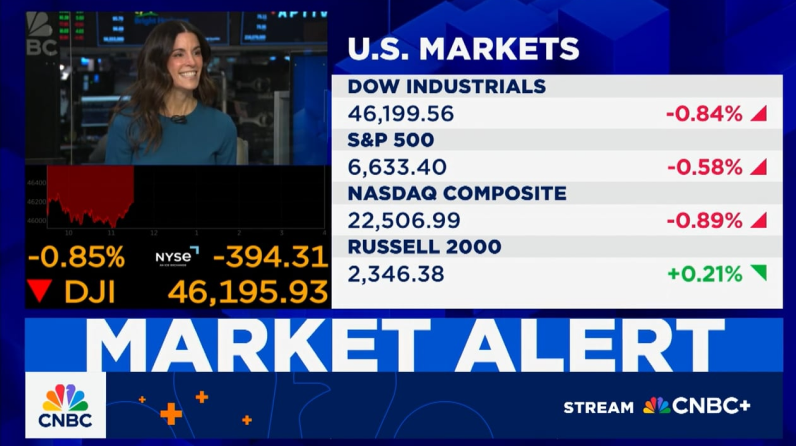

We continue to advise clients to take advantage of any near-term volatility to move towards longer-term strategic allocations with a focus on moving outsized cash positions into long-term allocations in short to intermediate duration fixed income and diversified equities.
U.S. CPI readings for May were once again lighter than forecasted, with U.S. headline CPI up +0.1% month-over-month (MoM) and up +2.4% year-over-year (YoY) versus consensus expectations for +0.2% and +2.4%, respectively. Core CPI was even more surprising, up only +0.1% MoM and up +2.8% YoY while economists were expecting +0.3% and +2.9%, respectively; this represents a deceleration from April even against the backdrop of higher tariffs.
Shelter remains the primary driver of inflation for U.S. consumers. The broad shelter index was up +0.3% month-over-month with rent up +0.2% and owners’ equivalent rent up +0.3%. However, this reflects meaningful improvement, as rent prices grew at their slowest pace since 2021 and owners’ equivalent rent was at its lowest level since November 2024. Energy prices were lower in the month, with gasoline down -2.6%, which helped to act as an offset to an increase of +0.3% in food prices, reversing last month’s decline. Airfares were lower once again, down -2.7%, but motor vehicle insurance was up +0.7%. Most notably, however, were lower prices in goods, expected to be higher on the back of announced (and collected!) tariffs. New and used cars and trucks, apparel, and furniture and bedding all posted month-over-month price declines.
U.S. equity futures were down coming into the print but rebounded into positive territory after the release. Not surprisingly, both the U.S. dollar and Treasury yields broke lower on the news as well. Combining today’s inflation read with last week’s jobs data, it is hardly surprising in our view that expectations for a Fed rate cut in September rose above a 75% probability, up markedly from around 60% coming into today’s news. The data released over the last several weeks – both hard and soft – make next week’s Fed meeting even more interesting, as calls for the Fed to make a move on rates are growing louder – even outside of the usual suspects.
However, the caveat to all of this is that the higher prices from tariffs will take time to transmit through the economy. One needs to look no further back than 2020 for evidence of this lag, and the members of the Federal Open Market Committee (FOMC) are loathe to ignore the recent past as they weigh policy changes. To be fair, it is unclear the level of pricing power companies have at this juncture given how much prices have risen already since 2020. There was also a meaningful build-up in inventories that are affording companies some time to consider their ability to pass through the tariffs. Regardless of the timing, however, the reality is that softer prints over the last several months are pressuring lower inflation expectations for the back half of the year, and peak headline CPI could be closer to +3% than +3.5% by the end of the year.
As for the remainder of this week, worth watching ahead of the Fed meeting are two important Treasury auctions: $39 billion in 10-year bonds will be on offer today while the Treasury will try to place $22 billion in much maligned 30-years tomorrow. Investors are also reacting to this morning’s announcement of a preliminary agreement between the U.S. and China involving rare earth metals and advanced technology, although details at the time of this writing are limited. We continue to advise our clients to take advantage of any volatility in the coming weeks to move towards longer-term strategic allocations, with a focus on allocating outsized cash positions into long-term allocations in short to intermediate duration fixed income and diversified equities.


VIDEO
Holly Newman Kroft Featured on CNBC’s Money Movers November 18

VIDEO
Plan for Peace of Mind with Our Estate Planning Organizer

MARKET COMMENTARY
Some Tricks, More Treats

INSIGHTS
CIO Notebook: Markets Rattled as Fed Leans Hawkish

REPLAY
Private Wealth Investment Outlook 4Q25

INSIGHTS
CIO Notebook: September Core CPI Comes in Late but Light

INSIGHTS
Charitable Fundraising: Moving Beyond Cash
INSIGHTS
The ‘Disruptive Ds’ Powering Commodities Markets
INSIGHTS
Expanding Horizons in Fixed Income
INSIGHTS
Year-End Planning: Key Considerations for 2025 and Beyond
INSIGHTS
Naming a Fiduciary: A Practitioner’s Perspective
MUNICIPAL BASIS POINTS
Under the Microscope
VIDEO
The Kantor Group | Q3 Video Podcast
IMPORTANT INFORMATION:
This material is provided for informational purposes only and nothing herein constitutes investment, legal, accounting or tax advice, or a recommendation to buy, sell or hold a security. This material is general in nature and is not directed to any category of investors and should not be regarded as individualized, a recommendation, investment advice or a suggestion to engage in or refrain from any investment-related course of action. Any views or opinions expressed may not reflect those of the firm as a whole. Neuberger Berman products and services may not be available in all jurisdictions or to all client types. Diversification does not guarantee profit or protect against loss in declining markets. Investing entails risks, including possible loss of principal. Investments in private equity are speculative and involve a higher degree of risk than more traditional investments. Investments in private equity are intended for sophisticated investors only. Unless otherwise indicated, returns shown reflect reinvestment of dividends and distributions. Indexes are unmanaged and are not available for direct investment. Investing entails risks, including possible loss of principal. Past performance is no guarantee of future results.
Portfolio positioning views expressed herein are those of Neuberger Berman’s Private Wealth Investment Group, which may include those of the Neuberger Berman’s Asset Allocation Committee. Asset allocation and positioning views are based on a hypothetical reference portfolio. The Private Wealth Investment Group analyzes market and economic indicators to develop asset allocation strategies. The Private Wealth Investment Group works in partnership with the Office of the CIO. The Private Wealth Investment Group also consults regularly with portfolio managers and investment officers across the firm. The Asset Allocation Committee is comprised of professionals across multiple disciplines, including equity and fixed income strategists and portfolio managers. The Asset Allocation Committee reviews and sets long-term asset allocation models, establishes preferred near-term tactical asset class allocations and, upon request, reviews asset allocations for large, diversified mandates. Asset Allocation Committee members are polled on asset classes and the positional views are representative of an Asset Allocation Committee consensus. The views of the Asset Allocation Committee and the Private Wealth Investment Group may not reflect the views of the firm as a whole and Neuberger Berman advisers and portfolio managers may take contrary positions to the views of the Asset Allocation Committee or the Private Wealth Investment Group. The Asset Allocation Committee and the Private Wealth Investment Group views do not constitute a prediction or projection of future events or future market behavior. Defensive positioning generally means an underweight bias on allocations to risk assets such as equities and alternatives. Positioning views may change over time without notice and actual client positioning may vary significantly. Discussion of yield characteristics or total returns of different asset classes are for illustrative purposes only. Such asset classes, such as equities and fixed income, may have significantly different overall risk-return characteristics which should be consider before investing.
The information in this material may contain projections, market outlooks or other forward-looking statements regarding future events, including economic, asset class and market outlooks or expectations, and is only current as of the date indicated. There is no assurance that such events, outlook and expectations will be achieved, and actual results may be significantly different than that shown here. The duration and characteristics of past market/economic cycles and market behavior, including any bull/bear markets, is no indication of the duration and characteristics of any current or future be market/economic cycles or behavior. Information on historical observations about asset or sub-asset classes is not intended to represent or predict future events. Historical trends do not imply, forecast or guarantee future results. Information is based on current views and market conditions, which will fluctuate and may be superseded by subsequent market events or for other reasons.
Discussions of any specific sectors and companies are for informational purposes only. This material is not intended as a formal research report and should not be relied upon as a basis for making an investment decision. The firm, its employees and advisory accounts may hold positions of any companies discussed. Nothing herein constitutes a recommendation to buy, sell or hold a security. It should not be assumed that any investments in securities, companies, sectors or markets identified and described were or will be profitable. Investment decisions and the appropriateness of this content should be made based on an investor's individual objectives and circumstances and in consultation with his or her advisors.
Neuberger Berman Investment Advisers LLC is a registered investment adviser.
The “Neuberger Berman” name and logo are registered service marks of Neuberger Berman Group LLC.